Read the AUG ISSUE #104 of Athleisure Mag and see 9PLAYLIST Sara Hughes in mag.
Featured

Read the AUG ISSUE #104 of Athleisure Mag and see 9PLAYLIST Sara Hughes in mag.

Read the AUG ISSUE #104 of Athleisure Mag and see 9PLAYLIST Kelly Cheng in mag.

One of the best things in life is to re-discover, deep dive, and better connect with things long-admired, and cherished. Bob Marley’s music lies at the top of my must-haves – many tracks and live albums suiting best for joyous and sad moments, and all in between, as well as adventuring outdoors, smoking sessions, studying, romance and more.
Upon reading Bob Marley and The Wailers: The Ultimate Illustrated History by Richie Unterberger, it was quickly apparent that it was time to dust off those old soundboard recording treasures and look to the music, life and culture that has served as such stong guidance over the years.
We put together an expanded 9PLAYLIST STORI3S to explore and ponder more about the man, his music, and the times for then and now, along a series of our favorite song selections: Sun Is Shining, Positive Vibration, Roots Rock Reggae, Downpressor Man, One Love, Zimbabwe, And I Love Her, High Tide or Low Tide, and Redemption Song.
Ultimately, with questions or thoughts of art and nature; good and tough times; peace and strife; love, respect and kindness, we ask along this and our musical journey - What Would Marley Do (WWMD)?
And I Love Her (Alternate Take)
ATHLEISURE MAG: I stumbled upon this ballad mid-college and was floored. It felt immediately intimate and special, loved sharing it at parties as friends generally loved it.
RICHIE UNTERBERGER: Most of the attention on Marley's career goes to the last seven or so years of his life when he was becoming an International star, first with the original Wailers and then with other Wailers. But there was a lot of good music that he made, often with the original Wailers, in the first 10 years of his recording career, which isn't very well known because it was primarily heard in Jamaica and not elsewhere.
And the earliest years of those are like from 1962-63 to 1966. That's when he had his debut single with Studio One. And the records are a lot more ska influenced than what he did after 1966 - [ska as] the precursor to reggae music. It's a lot faster and it's sort of a combination of Jamaican folk music with early American soul music.
Like they did a Curtis Mayfield song and he was maybe their biggest early influence. That's not a surprise. But them doing a Beatles song is not something that you would necessarily expect. And the version that they do, it is more imaginative than you would think, even if you know a fair amount about reggae and the Wailers. I'm a big Beatles fan. I love the original version, but they give it more of a wilting, early reggae cast and they also add, 'and I love her, yes, indeed,' after like every chorus. So it sounds more like a soul, early reggae hybrid sort of yearning quality that's not in the Beatles original, which makes it an interesting variation. And that's how they kind of varied soul music in general, when they were doing their first records in the mid '60s.
AM: At this time, were they doing covers towards getting acceptance or was that honoring their influences, or both?
RU: It's kind of all the above, but I think even though the majority of the material from the get go was original, I think there were a lot of songs they just liked that they wanted to do. It's just it's like when the Beatles started, they were already great songwriters on their first album, but the first few albums all have a good number of cover versions, which they did really well. They didn't just imitate Chuck Berry or Little Richard. They put their own personality on it very strongly. But also, I think they, and a lot of early reggae acts or ska acts, were just putting out tons of records, even though Jamaica was a pretty small market. And to fill out all these singles coming out and the one album that they did in the mid 60s, they needed to have more songs probably than they had already written. So they opted for songs that they really liked and maybe songs that when they performed live would get a good reaction to sort of vary their repertoire if they were playing long concerts.
AM: Yeah. I always liked the Bob Dylan one, Like A Rolling Stone.
RU: And another example, they did a Temptations song, Don't Look Back, an earlier version than the one that Peter Tosh did where Mick Jagger duetted with him in the late 60s. But he was aware of that song by the Temptations, which isn't one of their big hits, even when he was pretty early in his recording career.
AM: You know, I love that part of your book when you showed the Rolling Stones imprints, didn't know much about that, and definitely that whole part about Mick Jagger and the Stones backing Peter Tosh and all that.. That was terrific!
RU: Thanks. Yeah. It's really interesting because I think when the Rolling Stones set up their own label, their ambition was to have it be a sort of Apple Records, the way that Beatles ran Apple Records for the first couple of years, where it would be their label, but they would sign a lot of other artists and not just sign them, but often produce them or help them hands on, like they did with Badfinger and Mary Hopkin. And for various reasons, that aren't clear to me, they signed very few people, like less than five. And the only significant one they signed to put out a reasonable number of records was Peter Tosh. And I think that although the Stones didn't do many reggae songs, whether it was covers or they wrote their reggae style songs, they really liked the music.
They did some recording in Jamaica, like Goats Head Soup, the 1973 album, and they saw the connection between reggae and the American rhythm and blues and soul music that they loved and wanted to promote it with one of the leading artists who was available because he had left the Wailers for various complicated reasons, right after the Wailers started to get a big International audience on Island Records. So I'm not saying they were the most altruistic group of people in the world, the Rolling Stones, but they really wanted to promote a form of Black music, not Black American as it happens, but still from near North America.
It didn't work out indefinitely because Peter Tosh had a fallout with Keith Richards. This is like a few albums into his career with Rolling Stones records. But it was an alliance that made a lot of sense. It's the only such alliance the Stones made for their own record label, but it was the one solid indication of what they could do to help another artist. Not that Tosh needed so much help for his art, but his promotion to an International audience, which also Mick Jagger, of course, helped by actually singing on Don't Look Back, and also appearing in the official promotional video that Peter Tosh did, and also they sang it together on Saturday Night Live.
Sun is Shining
AM: This song increasingly became one of my favorites throughout my life. It’s always something that gets to me right away and the right ways, just find it so magnificent – it's sexy and inspirational!
RU: A lot of the attention given to Marley as a songwriter or for his protest songs are the ones championing social justice. And that's very important, arguably the most important part of his songwriting. But it should never be overlooked, that like almost all great songwriters, he could write about social issues, but also just write songs that were feel good songs, like ‘Positive Vibration,’ it was a great example, I think.
Also really good love songs - and although a lot of his songs, like Get Up, Stand Up is a great example, are about self-empowerment, a lot are sort of anthems just to make people feel more positive about what they are experiencing, what they hope to experience. And Sun Is Shining is an early example of that.
And I think it's interesting that throughout his career, Marley and Tosh would sometimes remake songs from pretty early in their career, like One Love is another great example, when they realized we're getting a much bigger audience and a lot of those people around the world never heard these records, which were primarily or only distributed in Jamaica. It was time to make those songs, which still have a universal message, something that everybody can hear on records, not just in their concerts. So Sun Is Shining is an example of that, where it was revisited and remade as well.
AM: Near the end of the song, he's talking about how he's 'a rainbow, too.' And it made me really reflect, wondering if this was him rescuing us as the unifier, and if also he was encouraging us that we all could all be rainbows, too?
RU: I would say like not just a lot of songwriters, but a lot of artists, his messages can be validly interpreted in different ways. So you might say he's talking about himself or that he's talking about everybody, all of his listeners and himself, or he's talking about both himself and his listeners. One of his great strengths was that as a songwriter, he could deliver very clear, yet easily understood messages that were inspiring. When you hear his spoken interviews, he's often a little vague. And it's interesting that it's not like his songwriting, which is very clear and direct. Get Up, Stand Up - I mean, how can you misinterpret that? I Shot the Sheriff - but I swear it was self-defense..; it's very lucid.
And it's unknown how precise his lyrics were explicitly stating. Yeah, meaning that it's hard to say whether his lyrics were meant for this is how I'm feeling, or this is how humans as a whole feel, or it could be both. His clear, direct messages were that in the lyrics, whether it's interpreted, however it's interpreted to apply to, they are very easily understood and they hit very directly [and across the world]. And it's unlike his spoken interviews, the last quote before my epilogue, somebody who was talking to the New York Times right after he died, just a fan, not someone who knew him, she said, ‘as an orator, he wasn't much, but his music said it all.’ It's almost like his music was his great expression of communication.
He also traveled and did concerts in Japan and other countries where knowledge of English was appreciably lower then, like a couple generations ago. A lot of people probably, if they read the lyrics on the page, they might have had a hard time understanding them, but when they heard them, they were geared around choruses which were easy to remember and sort of sink in. I think a lot of those messages did get through, both in the words, but also the way that they were sung.
High Tide or Low Tide
AM: So let's talk about High Tide or Low Tide and the Catch a Fire sessions in general? This track is so delicate and haunting, really enjoy it chilling with my girlfriend for sure.
RU: Yeah, Catch a Fire [sessions] - made really good music. I think in Britain a few people had heard them because there was such a big Jamaican population there, Jamaica, and they, Marley and Tosh, liked to have an International audience. They had gone to London in part to not just get a bigger audience or whatever concerts they could do, but try to find a record label. I think the feeling was it's going to be easier in Britain than in the U.S. because of that Jamaican population, Jamaica being a former British population in Britain, there was a much wider knowledge of reggae, even among non-Jamaicans, and his record labels were distribution, business distribution, primarily to serve the British Jamaican audience.
To bring reggae music itself to a wider audience, the goal was to give them more of a luster of a rock group, not so much in changing their music, but in marketing the album design, how it's distributed, it's on Island records, which a lot of people associated with those big British rock groups, and only subtly adding some rock instrumentation to their sound without diluting it.
Their appeal then, it was slightly earlier, but still very good records, music was slowing down into reggae and the lyrics were becoming a lot more socially conscious. Even though Catch a Fire is a very well-known album now, when it first came out it, it was primarily an underground hit, but that was very important, because that's where Marley's huge following could grow. When people saw the Wailers when they made their first American tours, they really stood out, in part because most white rock listeners had not heard reggae before, but also because the stage presence and the concerts were so good, and they got a lot of FM radio. I've talked to the leading FM radio disc jockey in the city in which I grew up, Philadelphia, and he said, 'oh yeah, when that record came out we leapt on it, we played it a lot, both because we loved it, but also we knew that our listeners who were maybe more used to Pink Floyd or Sticky Fingers, or something like that would love it too!'
But it should not be lost sight of that the biggest reason was that the material was very strong. You can't sell a record with that sort of marketing if the songs aren't really strong. In retrospect I kind of wish that it could have been a double album, not just Marley but also Tosh and Two, a lesser but significant degree by Quayler. Part of the reason I think that they did not stay together long on Island Records, after being together for a long time, was that Marley was getting so much of the songwriting, and that's one of the reasons he got more attention than anywhere else, although I emphasize they were a group at that time, it wasn't as what it became. They were a group in the sense that all of them have the impact that the act has.
AM: I was honored to see the Wailers after Bob Marley had passed, they were terrific.
Positive Vibration and Roots Rock Reggae
AM: This pair were often musts for outdoor adventures.
RU: With Positive Vibrations, it's like some of Bob Marley's song titles, you get the idea very quickly before even hearing the song. That's a really good example of, yeah we're going to dig into the lyrics.
We're all going to have a much better life here if we can all learn to groove together, which to some degree his concerts enable many people to do that together. But also, even if you don't think about the lyrics, it captures in a way that few reggae songs have done and reggae's been around now for 60 years or so.
Downpressor Man
AM: I first encountered Downpressor Man at an outside cafe in Miami. I had heard the cover rendition of Sinner Man before and loved it, but this magical slowed down version just hit so hard. Of course, a big fan of and feel it gives justice to Nina Simone’s tough bar to meet.
RU: I think that Peter Tosh shared with Marley as a songwriter, where he's documenting the injustices done to the underprivileged - which in Jamaica, most of the people considered underprivileged would have been. And in this instance, he adopted almost like spiritual, but made it particular, or more particular to the circumstances, not just of the oppressed in Jamaica, but the oppressed anywhere. I think that's a big part of not just Marley and Tosh's appeal, but reggae's appeal, especially in Africa, places which don't enjoy, in some cases, not as many human rights. Him changing the focus of the song and championing the downtrodden was something that made people feel that he had a lot of empathy for his audience and was able to express that well.
One Love
AM: With One Love, it's definitely something that became a huge country anthem, it always gives me a smile, and like a hug and form of encouragement – it's inviting..
RU: When preaching unity, [it's] hard to do.. without sounding sappy or sounding, just to get together, to find some common ground. This song had those kinds of sentiments, but did it in a humbler way than a lot of such songs do, but also should not be overestimated. The Beatles had a lot of great lyrics, but maybe the biggest reason they became the biggest group ever was that the songs were so melodic. Marley and the Wailers had a lot of such songs, which were very catchy, easy to hum. One Love is maybe his greatest expression of his hopes for a universal common ground between people of all geography and make inroads toward making the world a more peaceful place. Like I said earlier, he'd done that song, it caught on a lot more when it was remade in his solo career in the 70s. It was more updated, it sounds very contemporary.
Zimbabwe
AM: With Survival, it was very interesting to read your commentary because there came across with fierce lyrics and anthems.
RU: It might seem more tilted toward that on his album, but it seems like he always had a wide range of songs that he emphasized the most, but on others, that was because he was one of the first reggae artists, maybe the first, to recognize that an album should have, even if it's not like a story album or not all the songs, a theme. So maybe with Survival, he focused more on a full statement than like a romantic album that he did, but it's something that will vary on what was put out there that'll keep people interested.
I'm kind of speculating because, in part, Marley's life was short.. he didn't go through all of the phases of his career and explain them in ways like John Lennon did in his numerous interviews before he died. So it's a little bit of projection on my part.
AM: With Zimbabwe, having such significance, and the way it was performed so beautifully at legendary concerts, but how was that received globally?
RU: I do think that it meant a lot that Marley was sort of voicing his support for people's independence and self-determination in a country. It's often asked, and it's a very logical question, what would Marley have done had he not died so young in his later years? He was only - I think, although it's not certain, he definitely would have performed a lot more in Africa. He'd only perform there a bit toward the end of his career, both because he got a really great reception there, but also he saw that, as universal as his music was, it had some particular parts of meaning for people in Africa, where a number of countries - maybe South Africa got more attention in more attention in the United States for that than anywhere else, but a number of countries there - I think he would have performed there as much as he could have, maybe written more songs that were directly applicable to Africa. And possibly, it would seem like a logical step to me, maybe incorporating some elements of African music as he became more exposed to them, whether through touring or just listening more, because in the early 80s, that was the point where artists like Fela were starting to get a much bigger audience in the United States, and I could see Marley being very interested in someone like Fela, not just musically, but also lyrically, and also as a cultural figure in Nigeria.
Redemption Song
AM: Redemption Song, a lot of people's top favorite, and it is very reflective and boldy highlights the past and gives deep lessons. I’ve always held it in a different way, like a supercharged guide to fall back to when happy and chill or lost and sad. It says so much about the past, present and future of humanity, extremely prophetic!
RU: It's interesting to me for a few reasons. One is that unlike maybe all of his other really well-known - it could in some ways be heard not even as a reggae song, more as like folk. And that, it actually relates to something I was riffing on a couple minutes ago, [the] direction that he might have changed his style to that style that he would have done. Maybe he would have been thinking, yeah, I'm a reggae artist, I'm never going to abandon reggae, but I want to explore different styles that might not be dominantly reggae. Other artists have done that. Joni Mitchell started as a folk singer, then she admitted some rock influences, then she went into jazz. Paul Simon started, but then he incorporated reggae and gospel. He eventually got to African music, of course. I think he knew this when he was writing it, that he could do several different styles of music well - and when I hear it, because he didn't die that much long afterward, it's like he also had some sort of awareness that his time is not going to be long, whether he dies or not. it's almost like a Martin Luther King song. It's almost like Martin Luther King's final speeches, where he feels like, I might not have much time, but his urgency to get a message across.
AM: A hypothetical, because I've enjoyed some bubblegum gelato vape during our interview, what did he say about technology? Would he e-vape today or be comfortable his audience did?
RU: About his drug use, which is mostly cannabis, in the book or elsewhere, because there is music, but specifically as far as people using that sort of stimulation for recreational purposes, I don't think he ever would have minded whether it was with a religious dimension, as it was with a lot of prostitutes, or you just wanted to use it, at least in your ability of function and people around you. [Be sure to] be kind to your neighbors, right?
Yeah, and musically, maybe what he would have done. It's hard to project, like, if he was still making music in 2020, what he would have done. What he would have done, at least if he had lived another 10 or 20 years, if he wasn't ill. Technology, I think that would have been one of the things that he would have been wary about in some of his songs. The adverse effects of technology, not just AI, but climate change, which, when he died, that was his concern.
PHOTOGRAPHY CREDITS | PG 27, 38 - 57 Quarto Publishing/Bob Marley and The Wailers: The Ultimate Illustrated History | PG 58 GM/Current Affairs/Alamy Stock Photo | PG 60 Deposit Photos |










Read the JUL ISSUE #103 of Athleisure Mag and see BOB MARLEY AND THE WAILERS in mag.

In last month's issue we looped you in on a fun music festival that kicks off the Summer season in NY. From Jun 7th - Jun 9th Governors Ball kicked off with 3 days of music across genres at Flushing Meadows in Queens. We enjoyed being able to hear from our favorite acts across 3 stages throughout the days on an endless sunny weekend. Nestled in the park, attendees had the ability to feel like they left the city to be transformed into a musical oasis with sets filled with their favorite songs.

With acts that included The Killers, Post Malone, SZA, Peso Pluma, Sabrina Carpenter, and Reneé Rapp to name a few. While we hung out at the festival we took in the sets from our VIP that also included food and beverage vendors that kept our taste buds engaged and our energy up.

The last day defintiely included our favorites and with good vibes flowing throughout the weekend, we were transfixed all the way to the last song played by SZA who closed out a successful weekend. We're already looking forward to next year's lineup although we're months away from knowing who will perform, but if this year was any indication, we can't wait to see who it will be!
IG @govballnyc
PHOTOGRAPHY CREDITS | PG 137 Phelphs | PG 138 Paigge Wharton | PG 139 N Bradley | PG 140 Charles Reagan | PG 141 Sambalaban |
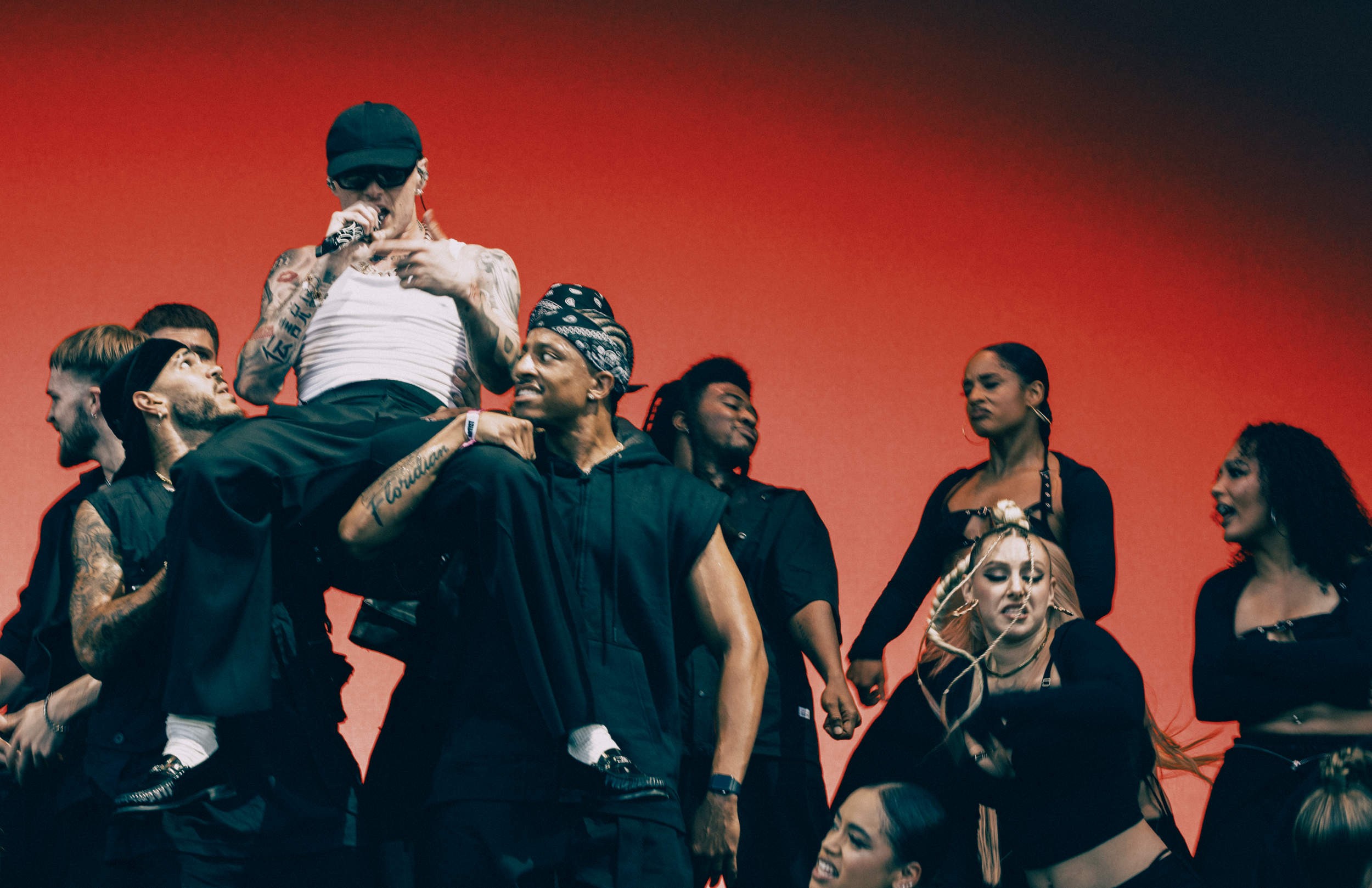
Read the JUN ISSUE #102 of Athleisure Mag and see GOV BALL 2024 in mag.

Read the JUN ISSUE #102 of Athleisure Mag and see 9PLAYLIST | Kygo in mag.

Next month, we're looking forward to making our way back to Queens to take in great performances, activations, food/beverages and the experiences that we enjoy when we're at one of our favorite music festivals that kick off the season here in NY for this year's Gov Ball taking place Jun 7-9th! Last year we had the pleasure to chat with Co-Founder, Tom Russell (MAY ISSUE #89 in 2023) about this music festival which includes an array of genres. They kicked off their newest home at Flushing Meadows in Queen which is an immersive park setting.
This year, with headlines that include: Post Malone and Rauw Alejandro on Fri, The Killers and 21 Savage on Sat, and ending with Sza and Peso Pluma on Sun, there is something for everyone with 60+ artists across the weekend and 3 stages and a number of acts from Sabrina Carpenter, Sexyy Red, Doechii, Reneé Rapp, and more!

With all of the music that you'll get to enjoy, you want to ensure that you have a number of options for you and your friends who will be attending. From an array of wine and spirit brands, Luke's Lobster, Sweet Chick, Magnolia Bakery, Stella X Hot Ones - there is something that reflects diverse culinary interests that will keep you going!
Make sure to visit the website to see what tickets are still available and to see how you can elevate your experience if you're interested in VIP options. For those that want to keep the party going, there are After Dark shows taking place throughout the city with artists you'll want to hear. Each of these performances have separate tickets and will allow you to truly get an immersive experience.
In the JUN ISSUE #102, we'll share more interviews and experiences from Gov Ball.
IG @govballnyc
PHOTOGRAPHY CREDITS | PG 140 Henry HWU | PG 142 Roger Ho | PG 144 Charles Reagan |

Read the MAY ISSUE #101 of Athleisure Mag and see PRE-COVERAGE | Governors Ball in mag.
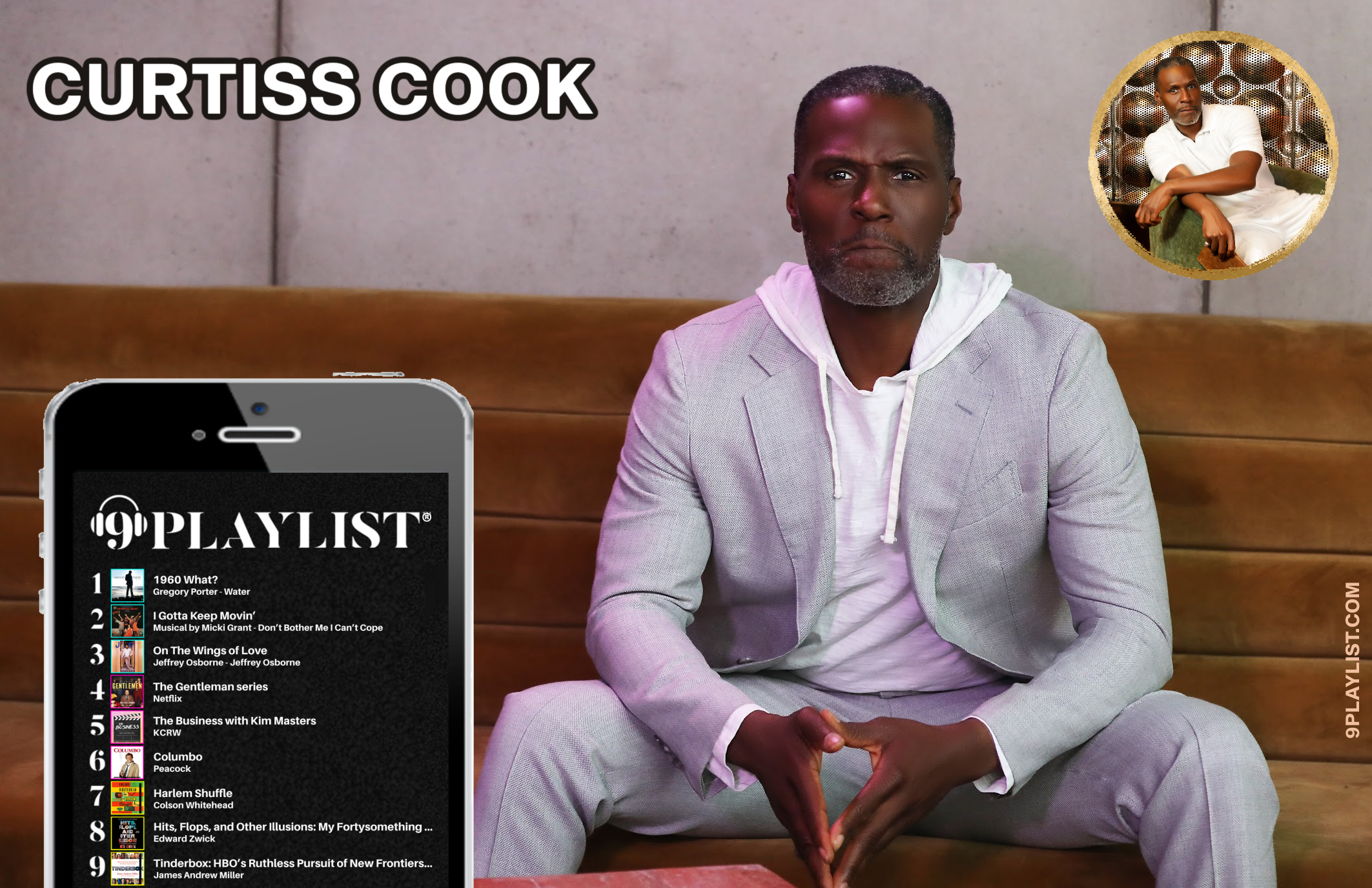

Read the MAY ISSUE #101 of Athleisure Mag and see 9PLAYLIST | Swedish House Mafia in mag.
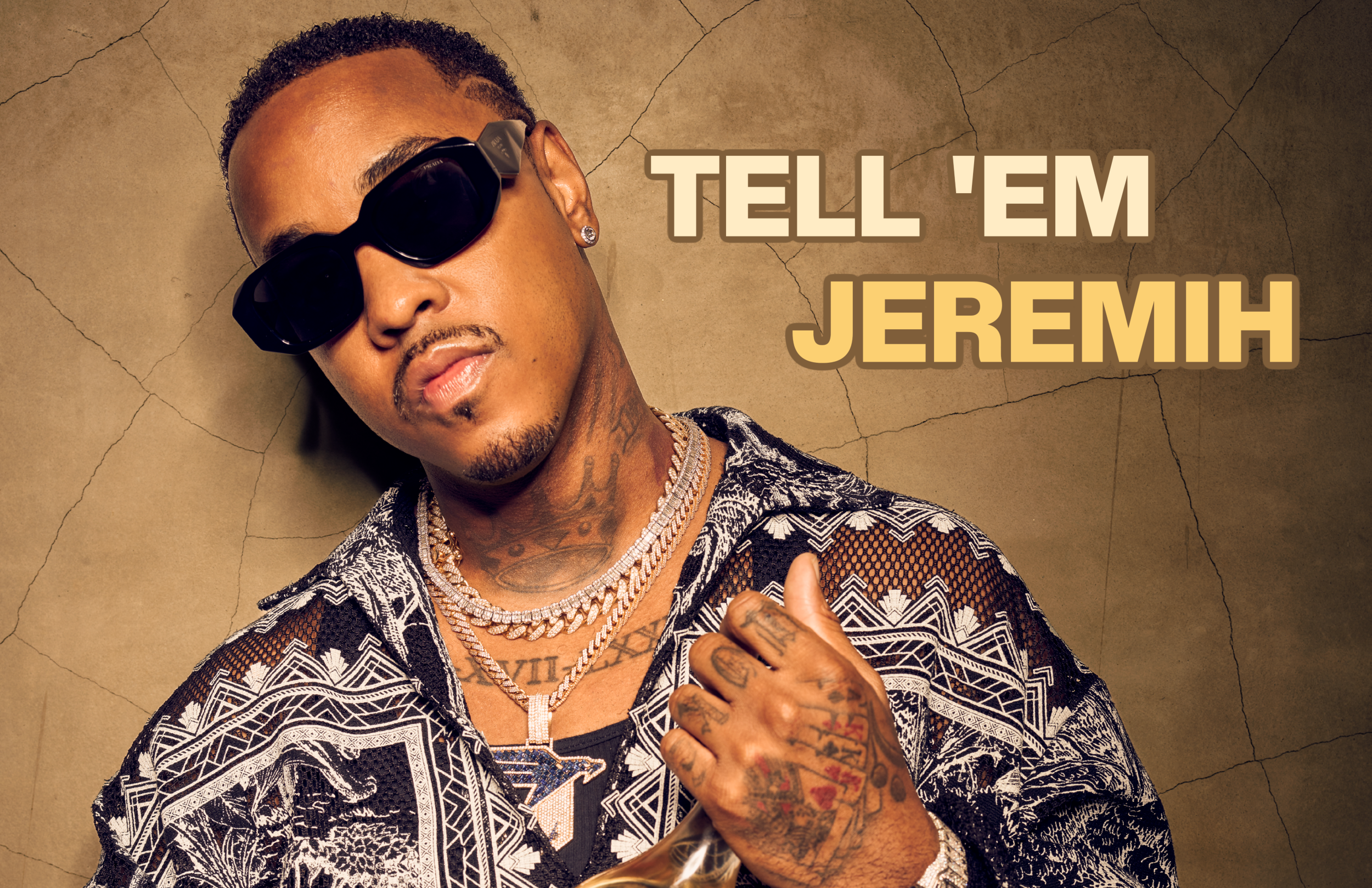
We're always looking to our playlists to set the mood and even more so when we continue to transition from the Spring to the Summer! We're excited that our 100th issue is covered by Singer/songwriter, rapper, and record producer, Jeremih. This musician also is well versed in playing the saxaphone, several percussion instruments such as congas and timbales, and piano/keyboards.
In 2009, his debut single Birthday Sex dropped and in addition to being a song that we enjoyed hearing, it came to #4 on Billboard's Hot 100 chart. After its release he continued to create hits with his 2010 single, Down on Me (featuring 50 Cent), and this single enjoyed successes that included sextuple platinum certification by the Recording Industry Association of America (RIAA). Don't Tell 'Em (featuring YG) was a 2014 single that was his 3rd top-ten hit on the Billboard Hot 100. He also continued releasing more singles with Oui and Planez (featuring J. Cole) with both receiving quintuple platinum certification by RIAA.
He also formed the duo MihTy with Ty Dolla Sign in 2018 where they had a collaborative album that was released in 2018. He has worked with a number of artists including 50 Cent, DJ Khaled, Ty Dolla Sign, YG, J. Cole, Flo Rida, Big Sean, Future, Lil Wayne, Fabolous, Chris Brown, French Montana, Wiz Khalifa, and more. He has also written songs for Kanye West, and Nicki Minaj.
His work has received additional recognition from winning an iHeartRadio Music Awards in 2015 for Hip Hop/R&B Song of the Year, 2X Nominee for Billboard Music Awards for Top R&B Song, Grammy Nominated for Best R&B Performance, and being Nominated for the American Music Awards R&B Breakout Artist to name a few.
We have enjoyed listening to Late Nights: The Album (Slowed Down) as well as seeing him on 50 Cent's The Final Lap Tour and as he is always working on projects, collaborations, features, we enjoyed seeing him play Elijah Linden in S1 of Power Book IV: Force.
We wanted to know more about how he was introduced to music, talking about the success of his single Birthday Sex, how he became involved in Birthday Sex Wine, and more.
ATHELEISURE MAG: From a young age you cultivated being a musician by learning how to play the drums, saxophone, percussion instruments, and piano/keyboards! What is it that you love about playing those instruments and incorporating them into your music?
JEREMIH: My primary choice of instruments currently is playing the keys and drums. Playing instruments is like speaking a different language of emotion. Each instrument carries its own unique tone and character, allowing me to express myself in diverse ways. Incorporating them into my music adds layers of richness and authenticity, creating a deeper connection with the audience.
AM: Your debut single, Birthday Sex, peaked at #4 on Billboard's Hot 100. What did it feel like to have all the successes that were associated with that song?
J: It was an incredible moment of validation and gratitude. Birthday Sex continues to resonate with so many people, and seeing it climb the charts was surreal. It was a testament to the hard work and dedication I had put into my craft.


AM: How did Birthday Sex Wine come about and why did you want to get into the wine industry?
J: For the past few years, white wine has been my drink of choice. Birthday Sex Wine was born out of a desire to create something special that would enhance celebrations and memorable moments. I've always been intrigued by the wine industry and saw an opportunity to blend my passion for music with the art of winemaking. It's a way to share joy and elevate experiences through a unique product that reflects my personality and style.
AM: In creating this wine, how much was your involvement?
J: I was all in on the process, from choosing the perfect blend of grapes to the look and feel of the label. My respect for winemaking came from hanging with winemaker Russell Bevan, who is known for an impressive collection of over fifteen 100-point wines. We spent time together in Napa developing the taste profile and educating me on the process of winemaking.
We wanted to know more about Birthday Sex Wine as Russell Bevan who is known as one of Nappa Valley's most acclaimed winemakers. We wanted to find out where his passion for wine came from, his successful wine company, how he came to Birthday Sex Wine and more.
ATHLEISURE MAG: When did you realize that you had a passion for wine?
RUSSELL BEVAN: I have had an intimate relationship with wine most of my life. Even as a child, I asked if I could go back for seconds during mass. For my whole life, wine has captivated my pallet and mind.
AM: Prior to launching your own wine companies, can you tell us about your background in this industry?
RB: I wrote a wine column through the Minneapolis Star Tribune and worked for the Gallo Winery doing sales while in college.
AM: How did Birthday Sex Wine come about?
RB: Jeremih and I met at a friend's house (Rob Ellin) and started talking about our mutual love affair with wine and that seed has grown into Birthday Sex.
AM: Can you walk us through the process of what it is like to create a wine? Where do you start?
RB: Everything starts with mother nature -- the soil microclimate we grow the grapes in and the growing season. We are the caretakers of what she gives us with this project. Our goal is to craft something that has delicious, pure flavors and a seductive mouthfeel.
AM: This wine is a Naked Chardonnay, do you foresee that there will be other varieties under this brand?
RB: The door is always open, Jeremih and I just have to find enough time together to taste wines that inspire us.
AM: Outside of Birthday Sex Wine, are there other wines that you're creating that will be launching that we should keep an eye out for?
RB: Adversity Cellars! Massively concentrated Cabernets with lush textures and pure fruit flavors.
IG @jeremih
PHOTOGRAPHY COURTESY | PG 16 - 21, 9PLAYLIST PG 22 + 23, 9DRIP PG 24 - 27 | Jeremih
Read the APR ISSUE #100 of Athleisure Mag and see TELL ‘EM | Jeremih in mag.


Read the APR ISSUE #100 of Athleisure Mag and see 9DRIP | Jeremih in mag.

Read the APR ISSUE #100 of Athleisure Mag and see 9PLAYLIST | Jeremih in mag.

Read the APR ISSUE #100 of Athleisure Mag and see 9PLAYLIST | Chase Stokes in mag.

Read the MAR ISSUE #99 of Athleisure Mag and see 9PLAYLIST | Brandon Soo Hoo in mag.


We're always thinking about the upcoming festival season and we have a number of people that we hope to see on stages we're heading to! Martin Garrix is a legendary international EDM DJ/Producer with residencies around the world, that we love rocking to. His passion for bringing people together with his music and those that he has collaborated with is undeniable! Just in the last few days alone, he has dropped tracks, revealed his full sets for performances at Amsterdam Dance Events - ADE last fall, and has announced his summer residency in Ibiza which he is currently in the midst of his South American tour. This artist is constantly on the move and we took a moment to find out about how when he fell in love with music, how he approaches creating his music, collaborations, recent releases, his residencies, and how he truly loves when people are able to enjoy his music and the vibe he presents!
ATHLEISURE MAG: When did you first fall in love with music?
MARTIN GARRIX: I have always loved music. I grew up in a musical household and started playing guitar by the age of 8. However, the moment I fell in love with electronic music was while seeing Tïesto perform at the 2004 Summer Olympics, for the Opening Ceremonies. They were airing this on tv, and I remember my mom calling me over to come and watch it. The energy that I felt from the music was amazing. After that, I started experimenting with electronic music myself.
AM: How would you define the Martin Garrix sound?
MG: I would say it’s energetic, uplifting and melodic. The most important thing for me is to make people feel something with my music.
AM: What's your creative process when it comes to making your music - where do you start and how do you get inspired?
MG: I can get inspired by basically anything, and inspiration can come at the most random moments. That’s why the voice notes app on my phone is filled with me most random moments. That's why the voice notes app on my phone is filled with me humming new song ideas while I’m on the road. Then when I get into the studio I usually start with melody lines either on guitar or piano. Especially the songs with lyrics they always start with a guitar and vocal or piano and vocal and then afterwards I produce it out. I much rather start with stripped-down versions so the song is strong on its own and not relying on the production. I really enjoy the songwriting process and have a soft spot for beautiful chord progressions and melodies. If the song sounds good with just a vocal and guitar, you can produce an electronic version, rock version, anything. Every song starts and ends differently. I do need to be in my own home studio to finish a song, that’s the place where I work the most comfortable and know the sound system the best.

AM: You have collaborated with a number of artists from Bebe Rexha, David Guetta, Dua Lipa, Khalid, Usher, Tïesto, to name a few. What do you look for when it comes to creating with other artists?
MG: I really need a certain connection with an artist, otherwise I can’t be in the studio with them making music together.
AM: We’ve been fans of your music since Animals and have enjoyed In the Name of Love with Bebe Rexha, Scared to be Lonely with Dua Lipa, Summer Days featuring Macklemore and Patrick Stump of Fall Out Boy, and Carry You with Third Party, Oaks, and Declan J Donovan. What are 3 of your favorite songs?
MG: It's impossible for me to choose. All my songs have different memories attached to them which make them special to me. Of course Animals will always be special because that song really kickstarted everything for me. At the moment I’m really loving playing the new songs live and seeing the crowd’s response to it.

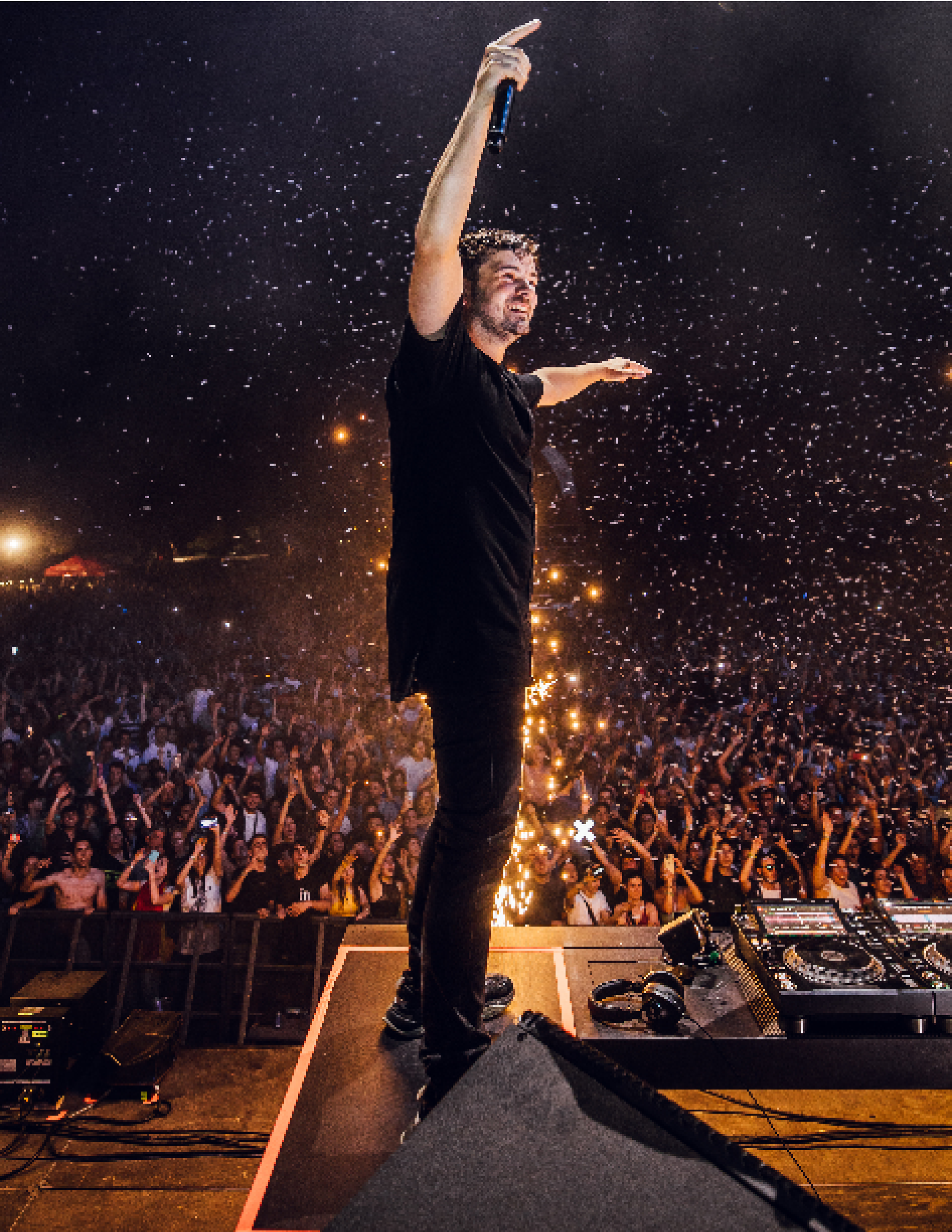
AM: I’ve had Carry You on a loop since it came out! What's the backstory of the song and how did it come together?
MG: The song was in the making for quite some time before we released it. Third Party and myself created the lead melody a year ago and I premiered it during Ultra Music Festival. After that it become a staple in my sets and I even used it as intro to my sets every now and then. The response from the crowd has been amazing every time I played it, so we just had to finish it. The vocals from Oaks and Declan really pushed the song to another level and I’m super proud of the end result and the responses we have been getting so far.
AM: Last fall you dropped Real Love with South African singer/songwriter Lloyiso. You guys teamed up here in New York and created this song. How did this song come about and why were you so excited to work with him?
MG: I found an Adele cover from Lloyiso online and was immediately blown away by his amazing voice. I reached out to him, but due to travel schedules and visas we weren’t able to meet in person for two years. We finally hit the studio together when we were both in New York and recorded Real Love there. He has one of the most amazing voices I’ve ever heard.
AM: You just dropped Breakaway with Mesto and WILHELM. How did this song come about?
MG: Mesto has been a really good friend of mine for years and we have worked together before. We had an early version of the song which I also premiered at Ultra and we both played it in our sets throughout the summer. A few weeks ago we decided to finish the song and added in vocals from Wilhelm.
AM: A few days ago you dropped your 3 hour set, IDEM for ADE from last fall and we thoroughly enjoyed it! What's it like to perform at that event, especially being in your hometown?
MG: ADE is always a special one for me as it is in my hometown. It had been 4 years since we last did my ADE solo shows at the RAI and it was so special to bring them back. We always have a show for all ages as well which is so amazing. The young kids have the craziest energy! It’s also very special to be able to invite all my family and friends to the show and celebrate together after, that doesn’t happen often.
AM: How do you approach putting your setlists together and what's that process like?
MG: I don’t have a fixed setlist for my shows as I like to feel the energy and responses from the crowd and play whatever song feels like the best fit for that moment. As a starting point I have my intro and last song. Of course there are certain songs that can’t be left out of my set, and I usually have some new music lined up that I would like to test.
AM: Ushuaïa Ibiza just announced that you are back for a residency that will run Jun - Sep! What are you looking forward to for 15 Thursdays this season?
MG: Performing at Ushuaïa feels like coming home. It’s been the same team we have been working with for years and no matter how many shows I’ve done there, it will never not be special. It’s the perfect opportunity for me to test out new music and I’m really looking forward to the shows.
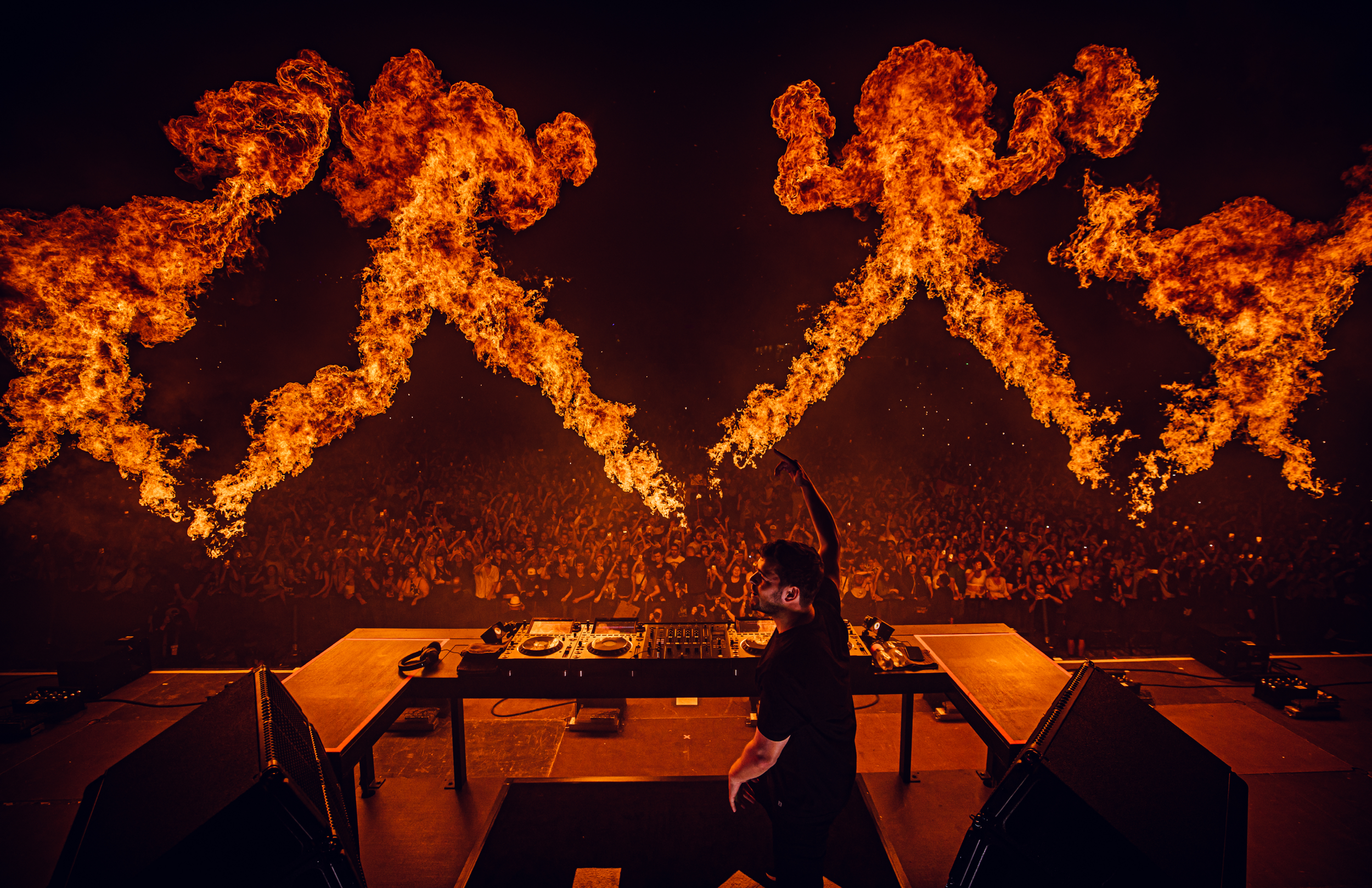

AM: You travel a lot! Just looking at 2024, you rang in the New Year in Bali. You hold residencies in Ushuaïa Ibiza and Omnia and Wet Republic in Vegas. You also have festival dates for Creamfields in Hong Kong and Ultra Miami along with your personal show schedule and special events like Saudi Arabian Grand Prix to name a few!
Where are some of your favorite places to perform?
MG: I am currently in the middle of my South American tour and the love I am getting there is overwhelming. People really know how to party and bring energy which is amazing. I also did an India tour last year which was absolutely crazy. A big part of my most loyal fanbase is over there so that always makes it special. But to be honest, I'm super grateful to be able to play in all these amazing countries. I'm still nervous for the shows because I want every show to be the best and for everyone to have a good time.
AM: What are 3 things that you must have when you're traveling to feel like you have a bit of home with you?
MG: I don’t really have those items to be honest. For me my headphones, laptop and phone are the most important items to have with me on the road.
AM: Do you have any pre-show routines that you do prior to hitting the stage?
MG: I usually like to wind down a little before the show, go through some of the songs I have lined up and then I’m all good to go. I don’t have any superstitious things I do before I get on stage or something.
AM: Do you have any post-show routines that you do after coming off the stage?
MG: I’m usually on a high and like to debrief some things with the team in the dressing room.
AM: When you're on stage, if we could bottle the feelings that you have, what would it be?
MG: I honestly wish I could share it with you because it is the most amazing feeling ever. It’s a burst of adrenaline and happiness mixed together.
AM: You founded STMPD RCRDS back in 2016. Why did you want to launch your label and what should we keep an eye out for as we head into the Spring and the Summer?
MG: I wanted full creative freedom over my music which was the main reason we started STMPD RCRDS. We quickly also started signing other artists and the label grew into this creative hub for all kinds of artists. I’m so proud of the label and all the amazing artists that are releasing on there weekly. We have signed really talented artists like Eleganto, Mesto, DubVision, Julian Jordan but are also releasing S.Salter which is neo-classical music for example.
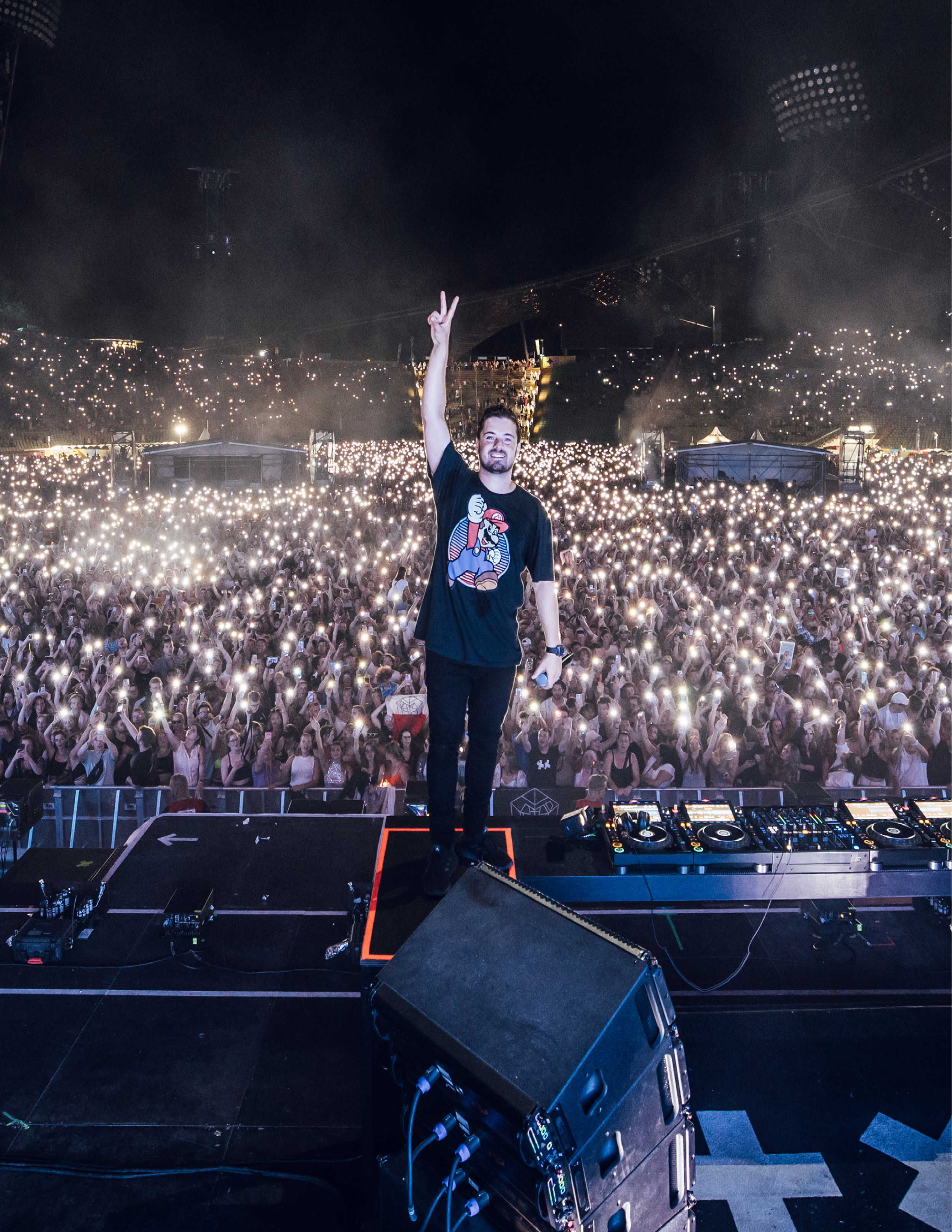
AM: How do you stay in shape as we're always looking to add to our fitness routines?
MG: This can be a challenge for me, but the last couple of months I have found a routine that really works for me. I try to eat healthy and be in the gym almost every day for a workout. I also really enjoy sports such as padel and wind surfing whenever I have the time.
AM: How do you take time for yourself?
MG: It’s difficult but I do try to take time for myself to do sports or spend time with family and friends. As weird as it may sound, making music is also something I really like to do in my time off. It’s my biggest hobby so making music really doesn’t feel like work to me.
AM: Are there any projects that you can share that we should keep an eye out for that you're working on?
MG: We released Carry You and Breakaway as surprises the past two weeks, but there are two more releases coming up the next two weeks because we are releasing an EP called IDEM. The EP has the same name as the live show because it represents the period leading up to the show where I premiered and played all the songs that will be on the EP. The next release will be Biochemical together with Seth Hills.
AM: What do you want the Martin Garrix legacy to be?
MG: All I want is to make people happy with my music.
PHOTOGRAPHY COURTESY | Louis Van Baar
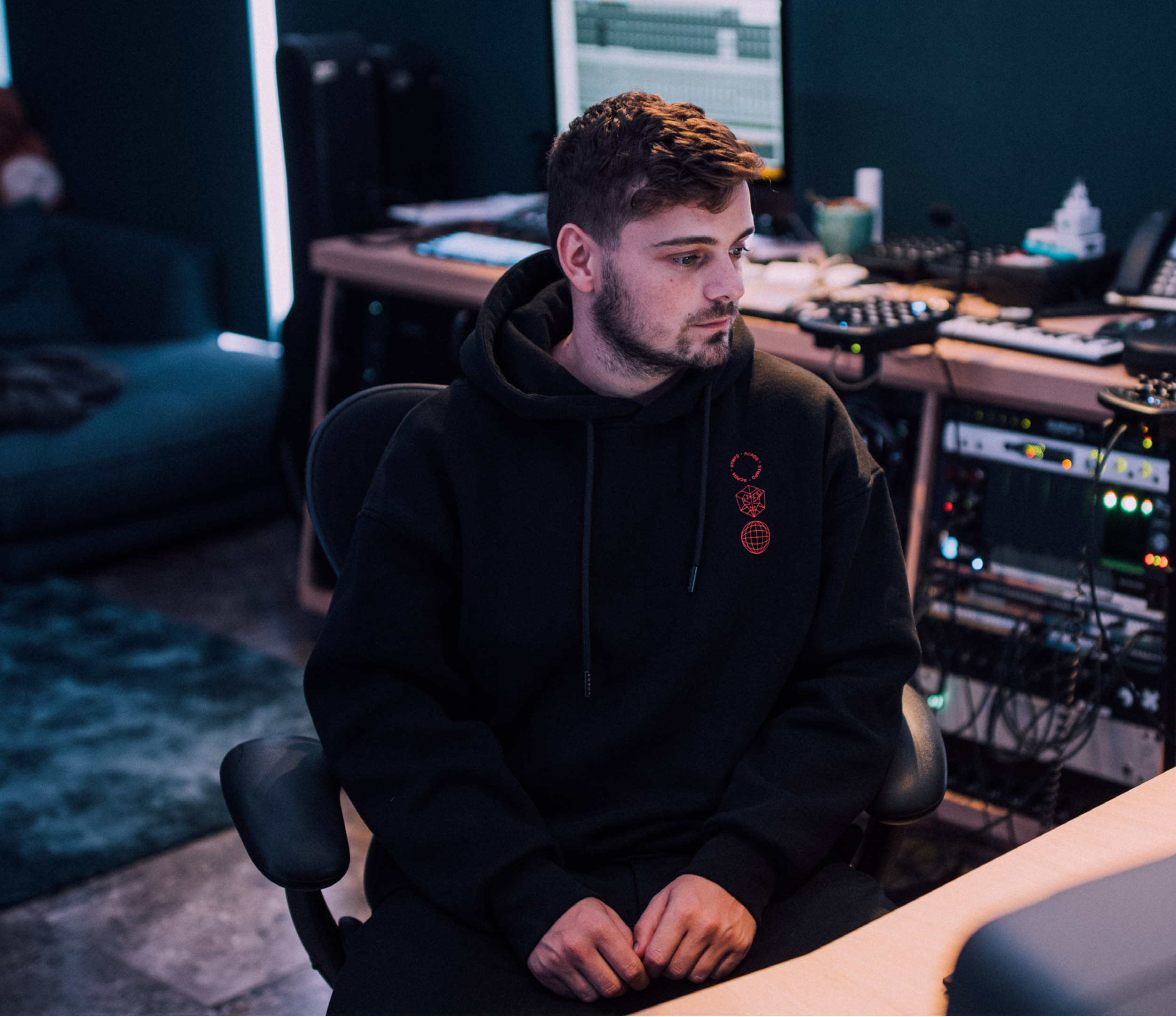
Read the FEB ISSUE #98 of Athleisure Mag and see MAKING THE WORLD HAPPY WITH MUSIC Martin Garrix in mag.

Read the FEB ISSUE #98 of Athleisure Mag and see 9PLAYLIST | Lionel Messi in mag.

We're always about good vibes and keeping them going. As we think to warmer days ahead, we caught up with lead singer Beto Montenegro of RAWAYANA who has released 4 studio albums, and received a nomination for Best New Artist of at the 18th Latin Grammy Awards in 2017. They're currently taking a break from their World Tour which will continue next month. As we're always on the hunt for great music, we took some time in the midst of the band's busy schedule to find out more about who they are, how they came together, their sound, those they've collaborated with, and their partnership with Old Parr scotch.
ATHLEISURE MAG: When did you fall in love with music?
BETO MONTENEGRO: It's because music makes me happy, it makes me smile. I feel it is the best tool to express my point of view about life.
AM: When did you realize that you wanted to do this professionally?
BM: After I realized that we had a big community waiting and asking for new music from us.
AM: When did you realize that you wanted to come together to create RAWAYANA?
BM: We really just did it for fun. There was no real plan to “create” it.
AM: How would you define the RAWAYANA sound?
BM: I think it’s an eclectic mixture of Caribbean sounds influenced by pop music.
AM: You were nominated as Best New Artist at the 18th Annual Latin Grammy Awards back in 2017, what did it mean to you to have that distinction?
BM: I don’t like to pay attention to awards. I feel that art or music is not a competition, but in a way it felt cool to be recognized by the industry so we had such a good time spending time with a lot of friends in the business.
AM: What have been some of your favorite collaborations that you've had musically?
BM: Danny Ocean, Elena Rose, Natalia Lafourcade, Micro TDH, Mr Eazi… all our collaborations are amazing.
AM: You've released 5 studio albums and most recently '¿Quién trae las Cornetas?' (Who Brings the speakers?) tell me about this and what we can expect from it.
BM: It’s an album about cycles and new journeys. For us the music and RAWAYANA is about a journey, so the music is a very important part in our journey. It’s a very personal album but also the union of like-minded people making music and having fun in the studio.
AM: You just finished a tour here in the US and you already have dates lined up for next year, do you have any routines that you do right before a show to get ready to hit the stage?
BM: I warm up my voice in the shower.
AM: Do you have routines that you do after the show so that you can come down from all that energy?
BM: I really don’t have one. It always changes on nightly basis.
AM: You have a nice breather now with it being the holidays. You created a cocktail in collaboration with Old Parr known as Old Parr Rawy. How did your partnership come about and tell us about this drink?
BM: We’re thrilled with this partnership with Old Parr to bring even more golden moments to our music. The brand is an icon in Latin America, and just like the whisky, our music is a fusion of different sounds, flavors, and rhythms, so we know our fans will be just as excited to raise a glass of Old Parr with us. Also, we wanted to give our fans a taste of home during the Holiday season by creating a cocktail inspired by Venezuela and the fusion of flavors we create as a band—The Old Parr Rawy.
AM: How does this drink tie into the band and your sound?
BM: The Old Parr Rawy is a delicious and easy-to-make cocktail made for everyday golden moments this Holiday season – from enjoying the energy from a concert to toasting with our closest friends. This cocktail is a fusion of different flavors, sounds, and rhythms, like our music.
AM: How will you spend the holiday season?
BM: With my childhood friends and family!
OLD PARR RAWY
INGREDIENTS
· 1.5 oz Old Parr Aged 12 Years
· 1 oz Grapefruit juice
· .5 oz Maple syrup
· .25 Lemon juice
· 3 Dashes of angostura bitters
PREPARATION
Fill a cocktail shaker with Old Parr Aged 12 Years, grapefruit juice, maple syrup, lemon
juice and ice. Shake the mixture thoroughly, then pour into a serving glass. Top with 3
dashes of angostura bitters.
IG @rawayana
PHOTOGRAPHY COURTESY | PG 52 RAWAYANA/Facebook | PG 54 Team Diageo

Read the JAN ISSUE #97 of Athleisure Mag and see LET THE MUSIC PLAY | RAWAYANA’S Beto Montenegro in mag.
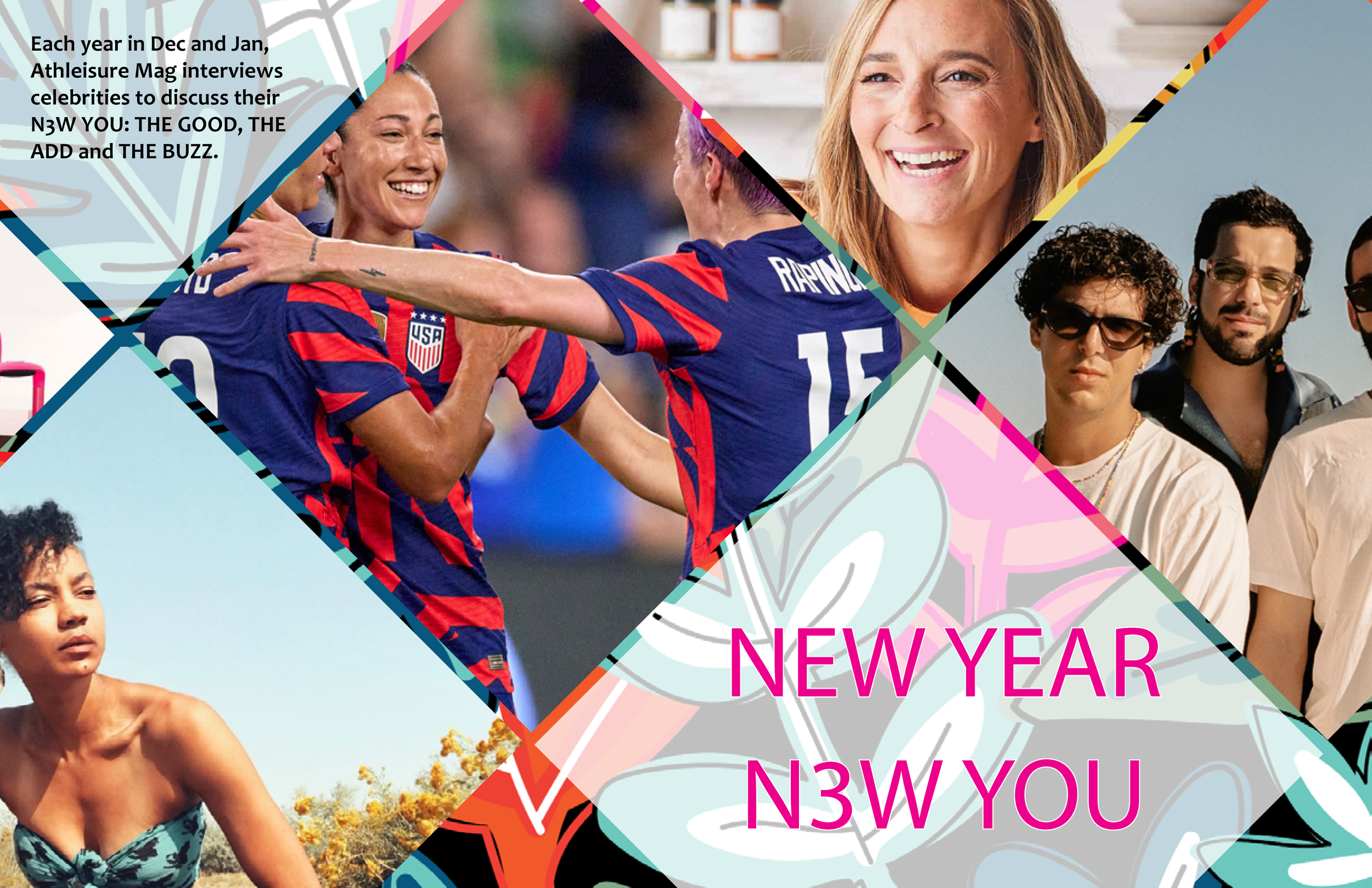

We always enjoy a stunning coffeetable book that blends music, culture, and iconic artists together. In Bob Marley and The Wailers: The Ultimate Illustrated History dropped this month to dig into the life and legacy of this man and his band. Even after 40 years of Marley's death, he and his band continue to be the most famous reggae artists of all time!
Throughout the book are stunning images from various points of their career which allows you to see their life as well as the times that they lived in. We see how they went from a Jamaican ska act to international superstars while navigating being in their country that was going through its own awakening at that time.
The book illustrates how they popularized their genre, the influence of the Rastafari movement, Marley's socially conscious lyrics and how he became a symbol of pride and justice.
You'll learn about the history of the band up to Marley's death in 1981 and how his influence continues today. Images of performances, off-stage photography, rare memorabilia and commentary from noted music jounalists. This book also talks about the 2024 Bob Marley biopic, One Love which is in theaters on Valentine's Day.

When North Carolina's richest woman dies in The Heiress, she is also the most notorious woman! Ruby McTavish Callahan Woodward Miller Kenmore, as a child was kidnapped as well as becoming a widower four times over!
She lorded over her tiny town of Tavistock from Ashby House, her family’s estate high in the Blue Ridge Mountains.
Upon her death, her adopted son, Camden, wants nothing to do with the house, money or remaining relatives. He lives his own life as an English teacher in Colorado with his wife Jules. When his uncle dies, he is pulled back to his mess life. He begins to question the rumors of his mother's kidnapping when she was a girl as well as what happened to the husbands. A bigger question is why she chose to adopt him as well! Finding out about this information means more to him than a will and understanding the long reaching arms of what family means and how everyone is connected to one another is essential.

In The Heirloomed Kitchen: Made-from-Scratch Recipes to Gather Around for Generations we are privy to a curated cookbook of nostalgic-style photography that shows heirloom cookware, vessels, and utensils and recipes that are passed down from mother to child and grandchild.
With over 100 recipes there are a number of family recipes for breakfast, lunch, and dinner.
Read the JAN ISSUE #97 of Athleisure Mag and see BINGELY BOOKS in mag.
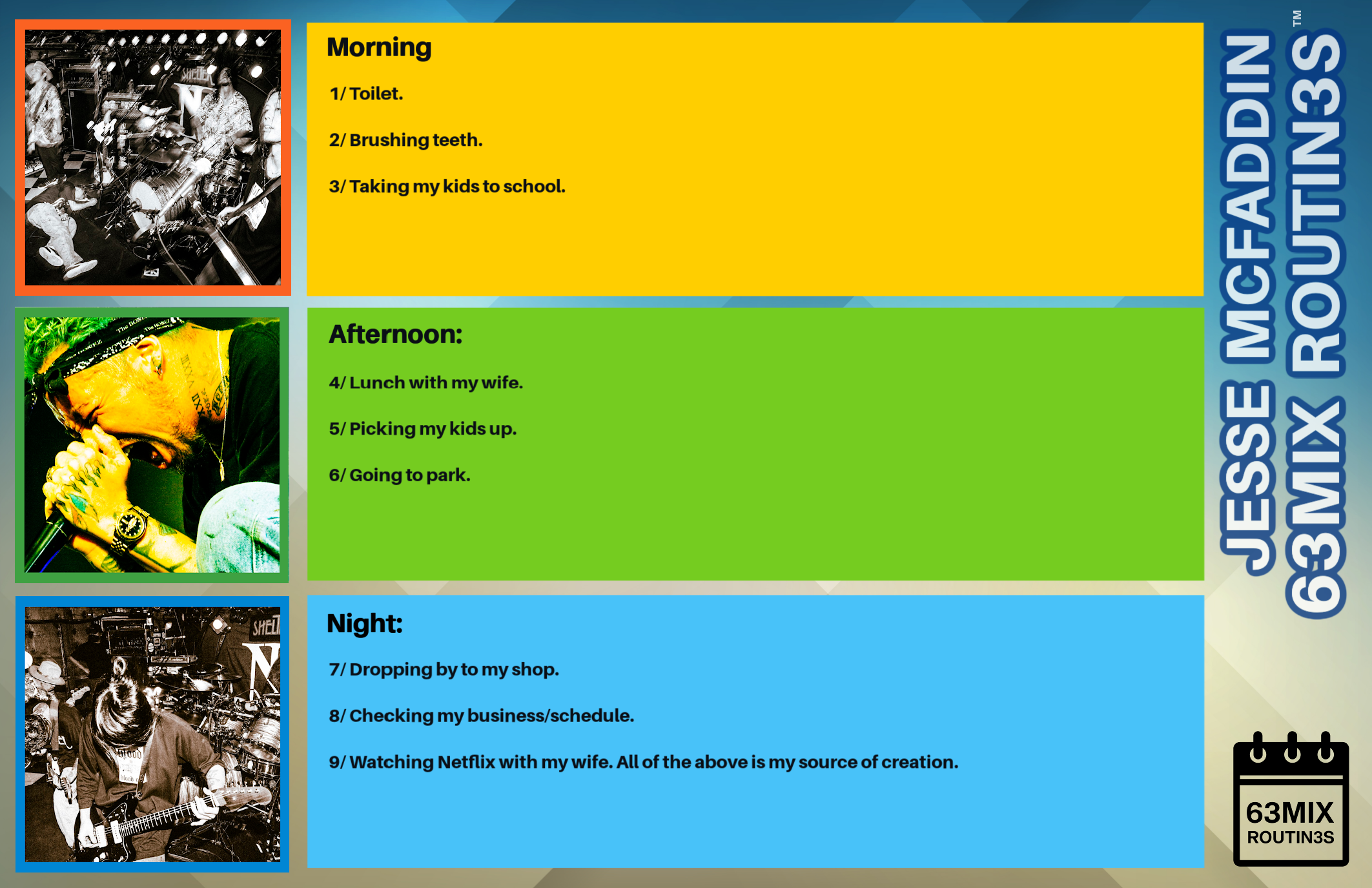

Read the JAN ISSUE #97 of Athleisure Mag and see 63MIX ROUTIN3S | Jesse McFaddin in mag.